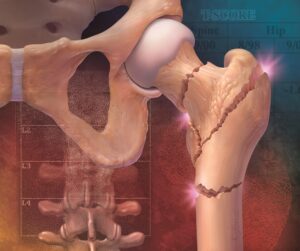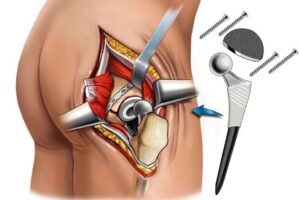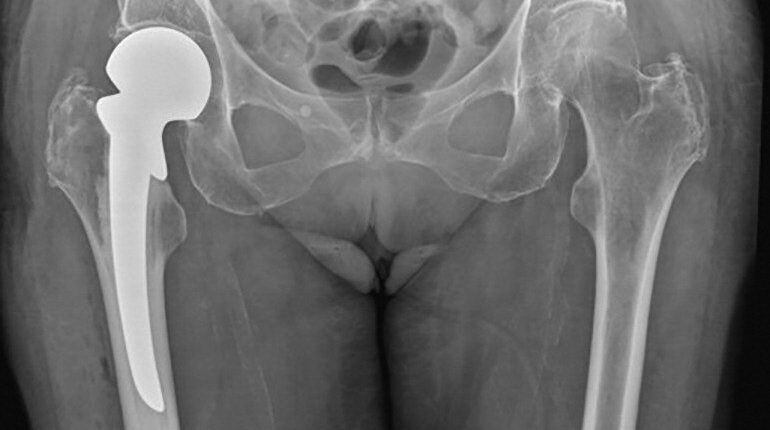It is a fracture that occurs in the upper part of the thigh bone (femur), close to the hip joint. hip fracture It usually occurs as a result of a fall, impact or conditions that reduce bone density, such as osteoporosis. It is more common in older individuals and is a serious injury because it limits mobility. The treatment process can be long. Treatment options include surgery, physical therapy and rehabilitation.
What are the Symptoms of Hip Fracture?
 Sudden and severe pain in the hip area is the most common symptom. This pain is usually felt in the groin, thigh, or outer part of the hip and worsens with movement. hip fracture People with it often cannot walk or bear weight. They may even have difficulty moving in bed.
Sudden and severe pain in the hip area is the most common symptom. This pain is usually felt in the groin, thigh, or outer part of the hip and worsens with movement. hip fracture People with it often cannot walk or bear weight. They may even have difficulty moving in bed.
The broken leg may appear shorter than the other leg. This may be especially noticeable while lying down. The foot of the broken leg may point outward and the leg may stand abnormally. Swelling and bruising may occur around the hip. These symptoms are caused by bleeding and fluid accumulation in the area after the fracture.
Severe tenderness and pain may be felt when the hip area is touched or gently pressed. People experiencing this condition may experience loss of balance and a feeling of weakness in the legs. This increases the risk of falling. hip fracture When your condition is suspected, it is important to seek medical help immediately. Early diagnosis and treatment are critical to prevent complications and speed up the recovery process. Treatment usually requires surgical intervention. Then comes the physical therapy and rehabilitation process.
What Causes Hip Fracture?
Falls are the most common, especially in older individuals hip fracture is the reason. Weak bone structure and balance problems increase the risk of falling. Indoor accidents, slippery floors, stairs and other obstacles increase the likelihood of falling. Osteoporosis is a condition that causes bones to weaken and become brittle. This disease is especially common in postmenopausal women. Weak bones can break easily even with minor trauma. Trauma such as trauma, traffic accident, sports injury causes it in individuals of all ages. These types of fractures usually occur in young individuals and are associated with serious injuries.
As we age, our bones naturally become weak and brittle. Additionally, muscle strength and coordination are also reduced, increasing the risk of falls. Some chronic diseases and conditions can negatively affect bone density and health. For example, chronic kidney disease, hyperthyroidism, and some types of cancer can impair bone health. Adequate calcium and vitamin D intake is very important for bone health. Deficiency of these vitamins can cause bones to weaken and increase the risk of fractures. Low levels of physical activity can reduce muscle and bone strength. Regular exercise helps increase bone density and strengthen muscles, reducing the risk of falls and fractures.
Some people are genetically predisposed to osteoporosis and other bone diseases. in the family hip fracture Individuals with a history of fractures may be at higher risk of fracture. Some medications, especially long-term steroid use, can negatively affect bone health. These medications may increase the risk of fractures by decreasing bone density. Excessive alcohol consumption and smoking are factors that negatively affect bone health. These habits can increase the risk of fractures by reducing bone density. It is a serious health problem and usually occurs due to reasons such as falls, osteoporosis and trauma. To prevent these fractures, it is important to exercise regularly, eat healthy, and reduce the risk of falling.
What are the Treatment Methods for Hip Fracture?
 The patient may need to take bed rest for a while for the fracture to heal. In the immobilization method, the hip area is fixed to prevent the fracture from moving. Physical therapy is applied to prevent muscle weakness and increase mobility. Screws and plates are used to bring together and fix unstable fractures. In cases where the hip joint is severely damaged, the joint is completely replaced with a prosthesis.
The patient may need to take bed rest for a while for the fracture to heal. In the immobilization method, the hip area is fixed to prevent the fracture from moving. Physical therapy is applied to prevent muscle weakness and increase mobility. Screws and plates are used to bring together and fix unstable fractures. In cases where the hip joint is severely damaged, the joint is completely replaced with a prosthesis.
This procedure is known as total hip replacement. Partial prosthesis is applied when only part of the hip joint is replaced with a prosthesis. The fracture is fixed with a metal nail placed inside the femur bone. Exercises are performed to increase muscle strength and restore joint mobility. Patients learn to walk using assistive devices such as walkers or canes. Patients are given training to enable them to perform daily living activities independently. hip fracture In the treatment, drug therapy is also applied to support pain management and bone healing.
Painkillers, anti-inflammatory drugs, and medications to treat osteoporosis are commonly used. By making ergonomic arrangements in the living spaces of patients, the risk of falling is reduced and the safety of the patients is ensured. These regulations include making the floors in the house non-slip. Treatment requires a multidisciplinary approach. The most effective results are achieved when the orthopedist, physical therapist and nurse work collaboratively. During the treatment process, an individualized plan is prepared to suit the patient's needs. The aim is to return to normal life as soon as possible.






